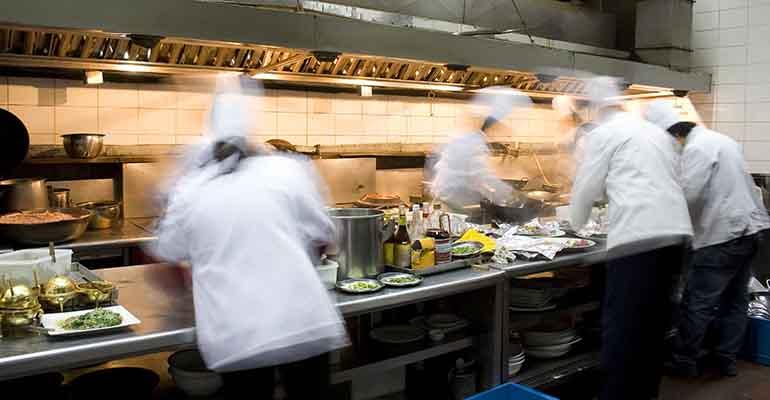Since the rise of the ghost kitchen several years ago, trust and transparency have consistently been issues that third-party delivery aggregators have tried to address through tougher operator guidelines and by cracking down on redundant brands, like Uber Eats did earlier this year.
But this week, a TikTok user @cammy_yam, aka personal chef Auntie Cammy, went viral with a behind-the-scenes video introducing her audience to her virtual restaurant business where she delivers food through DoorDash. In the video — which has now been taken down — she was proud that she made $10 by delivering a loaded salad with shrimp to a customer at 3 a.m., though users were quick to criticize her business as “ghetto” because she was running her food business out of her home.
In response, Auntie Cammy defended herself, commenting back that DoorDash “knows I’m doing it from home, and they sent the equipment to my home knowing I’m going to be cooking here” and showed off a “Welcome Kit” box that she was sent by DoorDash.
Since the video went viral on The Daily Dot, DoorDash said that Auntie Cammy’s virtual restaurant has been taken down from the DoorDash platform for not being compliant with local laws and restrictions.
“Restaurants operating on DoorDash are required to comply with all applicable laws and regulations,” a DoorDash spokesperson said in a statement. “If DoorDash learns of any operation in violation, we will swiftly remove them from the platform.”
While DoorDash says it supports businesses with varying business models, all operators must follow the company’s merchant terms of service, which requires business owners to follow local laws and restrictions. While these laws vary by city and state, operators have to follow local guidelines to provide proper paperwork. Houston city law, for example — where Auntie Cammy was selling meals on DoorDash — stipulates that all hot meals sold for consumption must be prepared in a commercial kitchen.
Auntie Cammy was able to bypass these regulations by signing up through DoorDash’s self-serve merchant onboarding process without speaking to DoorDash representatives. Small business owners must provide basic information of their business as well as a tax ID number when signing up to sell food via DoorDash. Every merchant that signs up receives a welcome kit in the mail identical to the one Auntie Cammy was showing off in her video. If DoorDash gets wind of operators attempting to bypass any company guidelines or local laws, the perpetrators are quickly taken down from the platform.
It would be easy to dismiss Auntie Cammy’s ill-fated viral video as a one-off instance of a home seller slipping through the cracks, but there have been several examples over the years of people showing off on social media how much money they’ve made selling food out of their homes through an aggregator.
Three years ago, one YouTuber posted a video that racked up over three million views detailing his time selling frozen pizzas out of his home through Uber Eats. He noted how easy it was to get started on Uber Eats, pay for advertisements through the platform, and order from his own “restaurant” to set up his business with a five-star review. Another YouTuber similarly posted a video about his own experience opening up a DoorDash restaurant from his balcony. More recently, local Chicago news station WGN9 News investigated a virtual restaurant calling itself Blackbird (likely to copy the Michelin-starred Chicago restaurant) after an Uber Eats driver complained that he had to deliver food from this alleged restaurant that was operating out of an apartment complex. The driver reported his findings to the local Department of Health and the operation was swiftly ordered to shut down.
Some of these instances — alongside other issues like redundant virtual storefronts, underperforming ghost kitchens, and otherwise mislabeled or misleading aggregator listings — have likely been the impetus for platforms to crack down on these shady restaurants. Uber Eats’ new policies for example, stipulate that all restaurants must “meet all relevant licensing requirements and to follow all food regulations—including food safety regulations—and industry best practices. Restaurants must maintain valid food establishment licenses and/or permits.”
Grubhub similarly updates its policy language to match the gist of DoorDash’s and Uber Eats’ updates, further stating that all Grubhub operators must provide a “federal tax ID number that matches the brick-and-mortar location of the restaurant.” Although none of these compliance policies from DoorDash, Uber Eats, and Grubhub appear to explicitly ban virtual restaurants operated out of a home kitchen, the policies in place should make it very difficult for a home chef to register with one of these aggregators services, and for local health departments to shut down an illegal restaurant.
However, these at-home virtual restaurant brands that have gained traction on social media are likely not the only illegal foodservice operations slipping through the cracks. Once their noncompliance goes viral on TikTok or YouTube or is covered by the local news, they have been universally shut down by the health departments and by the aggregator companies. Right now, it seems like it’s much easier for aggregator companies to spot noncompliant operators in the aftermath of public attention and subsequently kick them off the platform, than it is to deny their application to begin with. However, these policy crackdowns are hopefully a step in the right direction.
Contact Joanna Fantozzi at [email protected]




